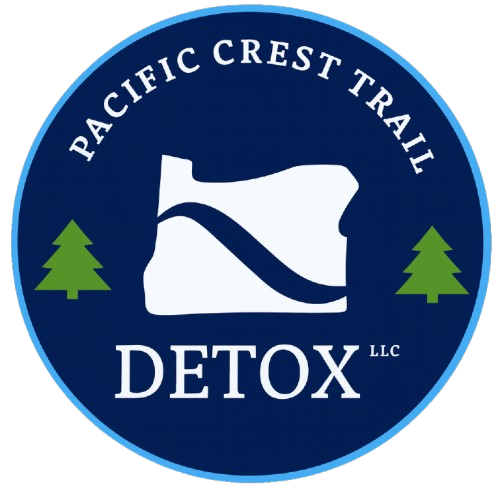Once in the body, tramadol is metabolized by the liver into O-desmethyltramadol, a more potent compound with a stronger affinity for opioid receptors. This transformation amplifies its analgesic effects, making tramadol effective for moderate to severe pain management.
Repeated exposure to tramadol gradually leads the brain to adapt and reduce its own neurotransmitter production. As a result, the brain increasingly depends on the drug to sustain its natural chemical balance.
This neuroadaptation lays the foundation for dependence. As tolerance builds, higher doses may be required to achieve the same relief or emotional effects.
Eventually, the brain and body may struggle to function normally without tramadol. This creates a cycle of compulsive use that is difficult to break without professional intervention.
Several factors can increase the likelihood that a person may develop a dependence on tramadol.
Some of the most common among them include:
Individuals with a family history of substance use disorders (SUD) are more likely to develop tramadol addiction. Similarly, those who live with untreated anxiety and depression may be more likely to misuse tramadol as a way to self-medicate emotional pain.
Those living with ongoing physical discomfort may begin to rely on tramadol not only for pain management but also for its ability to improve mood. Over time, this reliance can deepen into dependence, especially if alternative therapies are not available.
Beyond individual vulnerabilities, environmental influences—ranging from readily available prescriptions to social norms that normalize opioid use—can further exacerbate the risk of tramadol dependence, highlighting the need for a multi-faceted approach to prevention and treatment.
Further environmental factors usually include:
Understanding and addressing these risks early can reduce the likelihood of addiction.
Recognizing the signs of tramadol addiction is crucial for early intervention and effective treatment.
Below are some common signs indicating that tramadol use has escalated into addiction:
One key behavioral indicator is the consistent use of tramadol beyond prescribed limits. This can include:
Individuals may also begin seeking additional sources of the medication, such as visiting multiple healthcare providers or purchasing it without a prescription.
People with tramadol addiction experience a range of psychological issues, including:
Emotional withdrawal from relationships and responsibilities may accompany these changes, as tramadol use begins to take priority over other aspects of life.
Physically, tramadol addiction can present as noticeable changes in energy levels, alertness, and appearance.
Other common signs include:
Slurred speech, constricted pupils, and changes in coordination may also occur.
Individuals withdrawing from tramadol often experience flu-like sensations, including:
These symptoms can escalate quickly and cause considerable discomfort. Nausea and vomiting are common, often paired with abdominal cramping or diarrhea. This combination can lead to dehydration and fatigue, highlighting the need for supervised tramadol detox.
Restlessness is another hallmark symptom, frequently accompanied by muscle tremors or a crawling sensation in the limbs.
As a result of physical discomfort or agitation, sleep can be disrupted, resulting in difficulty falling or staying asleep. Those who had been taking high doses may also experience headaches and irregular heart rate.
Because tramadol alters serotonin and norepinephrine levels, discontinuation can trigger a sharp rebound in mood-related symptoms.
Anxiety often emerges early and may present as:
Panic attacks are not uncommon during the early stages of tramadol detox.
Below is an overview of how we safely guide individuals through tramadol withdrawal:
Tramadol detox at PCTD begins with a thorough and comprehensive assessment upon admission.
This initial evaluation helps our clinical team understand:
We carefully review the timeline of tramadol use, dosage patterns, previous detox experience, if any, and personal health concerns that could affect treatment decisions. This detailed assessment serves as the foundation for a fully individualized treatment plan.
Medical supervision is central to the safety and success of tramadol detox at PCTD. Our skilled registered nurses are on-site 24/7 to provide continuous support and respond to evolving needs.
In addition to 24/7 nursing care, individuals in tramadol detox receive daily visits from medical providers.
These daily rounds allow providers to:
This dynamic level of care creates a foundation of trust and allows clients to feel fully supported throughout each phase of detox.
Here are some of the strategies we may use to support safe, stable tramadol detox at PCTD:
To support individuals during tramadol detox, we may use Clonidine to help regulate the nervous system and promote overall stabilization during the early stages of detox.
In cases where withdrawal symptoms are particularly severe, short-term use of buprenorphine may be considered during tramadol detox.
At PCTD, the use of medications during tramadol detox is seen as a supportive bridge, not a long-term solution.
While medications play an important role in managing the acute phase of withdrawal, the ultimate goal is to help the body and mind restore their natural balance without relying on external substances.
Group therapy offers a powerful space for connection, reflection, and shared healing during tramadol detox.
Below are some of the key benefits and therapeutic goals of group sessions at PCTD:
The early stages of tramadol detox can often bring a profound sense of emotional isolation.
Group therapy helps ease this experience by offering a safe, welcoming space where individuals can:
Guided group sessions help normalize the experience of tramadol detox, reduce the stigma associated with substance use, and help individuals connect with others. This realization can significantly reduce internalized guilt and open the door to self-awareness and compassion.
Although the primary goal of tramadol detox is physical stabilization, the underlying psychological patterns that contributed to dependency often emerge during the detox process. Group therapy offers a space to begin gently exploring these patterns in the company of peers.
Facilitated by experienced clinicians, group sessions at PCTD integrate therapeutic modalities such as:
These approaches help individuals begin to identify thought patterns, emotional triggers, and maladaptive coping mechanisms that contributed to tramadol use.
Within the group, members start developing healthier ways of thinking and learning how to make more intentional decisions. This progress not only supports their tramadol detox journey but also carries forward into the next stages of treatment.
Group therapy provides a space where individuals can witness others navigating the same challenges with honesty and courage. This shared effort becomes a powerful source of encouragement.
Hearing others’ progress and setbacks fosters motivation and reduces the tendency to minimize personal goals or disengage from the process.
Peer accountability also begins to take shape in group therapy. Participants begin to recognize that their contributions, insights, and presence have value, not only for themselves but for the group as a whole.
This mutual responsibility helps cultivate a sense of purpose, consistency, and investment in recovery. Even at the detox stage, these elements of community begin laying the groundwork for a healthy recovery identity.
Tramadol detox serves an essential role by stabilizing the body and managing acute withdrawal symptoms, but it does not treat the root causes of addiction.
Once the body has cleared tramadol, individuals are often left to face:
These deeper issues require time, structure, and guided therapeutic work to be properly addressed.
Recovery looks different for everyone. We’re here to walk alongside you on a path tailored to your unique needs, goals, and experiences.
Some of the programs that our clients can access after tramadol detox include:
At this stage, emphasis is placed on building relapse prevention strategies and identifying personal goals. The consistent therapeutic schedule helps reinforce new routines and stabilize mood and behavior during early recovery.
IOP is particularly valuable for those rebuilding daily routines, pursuing employment or education, and reconnecting with loved ones, all while maintaining a therapeutic foundation.
Traditional outpatient programming offers ongoing clinical support with fewer hours per week for those who have established a stable foundation in recovery.
This level of care is ideal for maintaining progress while reinforcing relapse prevention skills and managing stressors that may arise after tramadol detox.
This stage is particularly important for reinforcing healthy habits and adjusting to increased independence while maintaining a connection to the recovery community built after tramadol detox.
Sober living provides a stable rhythm of recovery with expectations such as:
This step reinforces the gains made during tramadol detox and helps create a smoother transition into independent living.
Stepping away from tramadol use takes courage—and space. At PCTD, we offer both. Our Milwaukie, Oregon facility provides a calm, structured setting where individuals can safely detox under the care of a compassionate medical team.
We understand the pull of dependency and the fear that often accompanies withdrawal. That’s why we prioritize comfort, dignity, and emotional grounding at every stage. We believe true healing takes time, so we walk alongside each person with patience and care.






